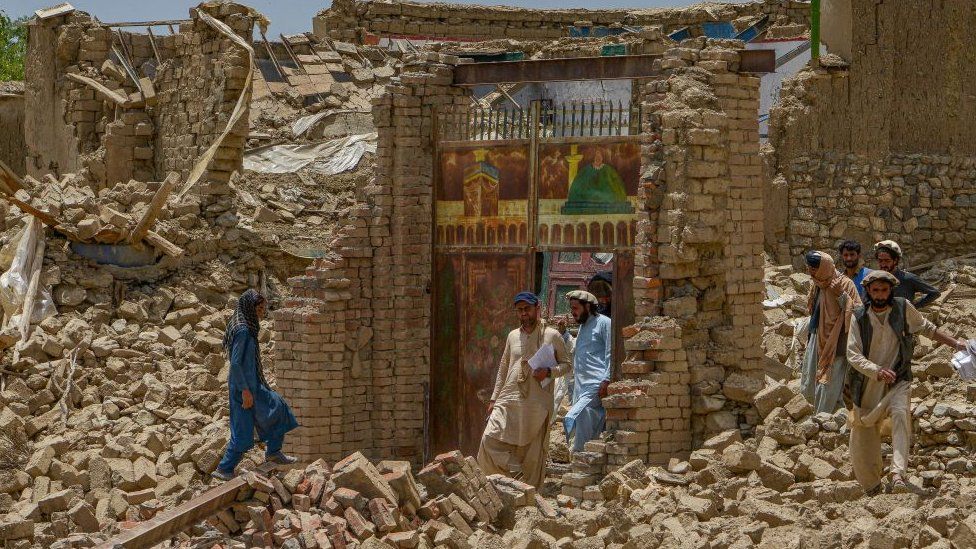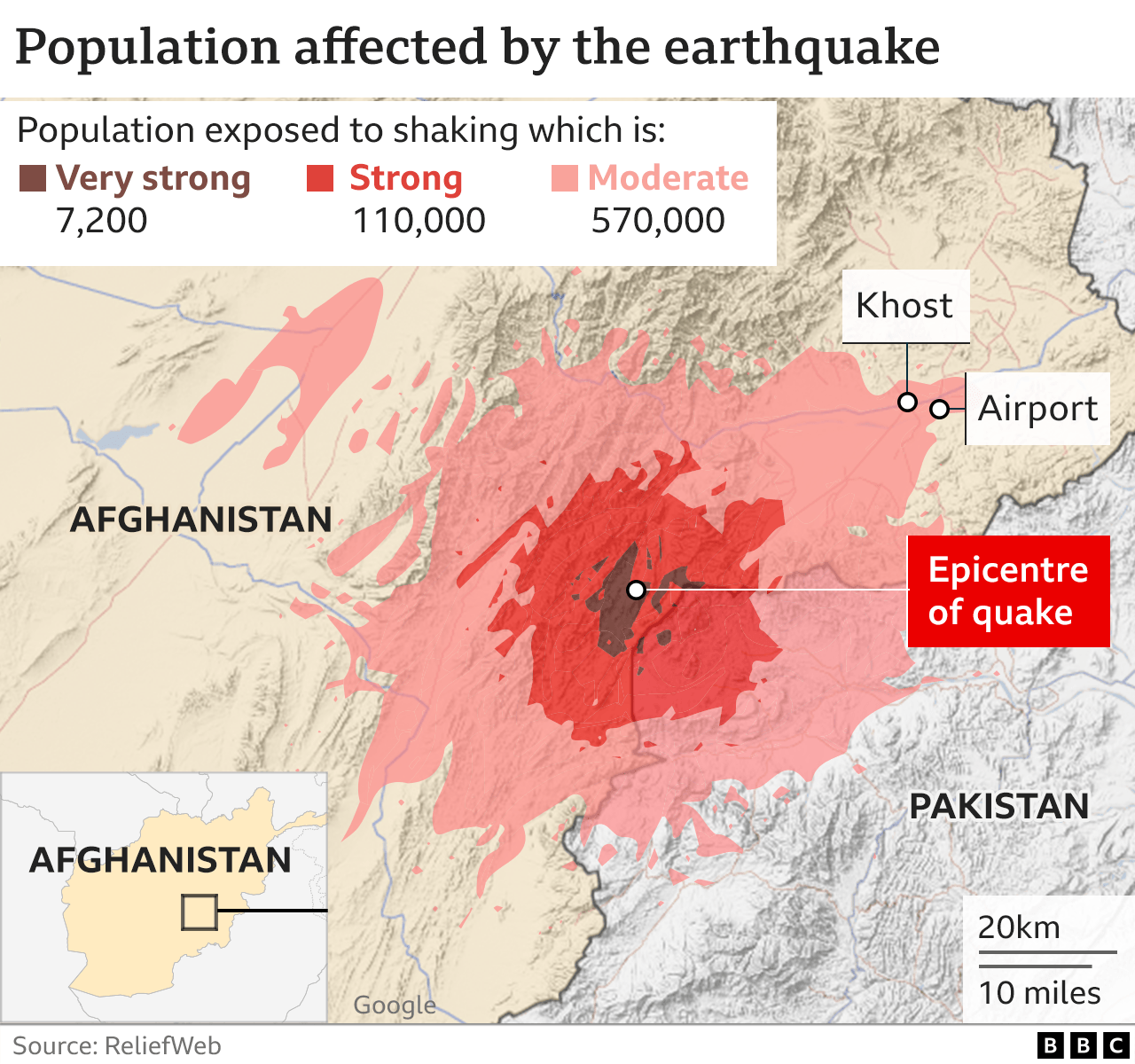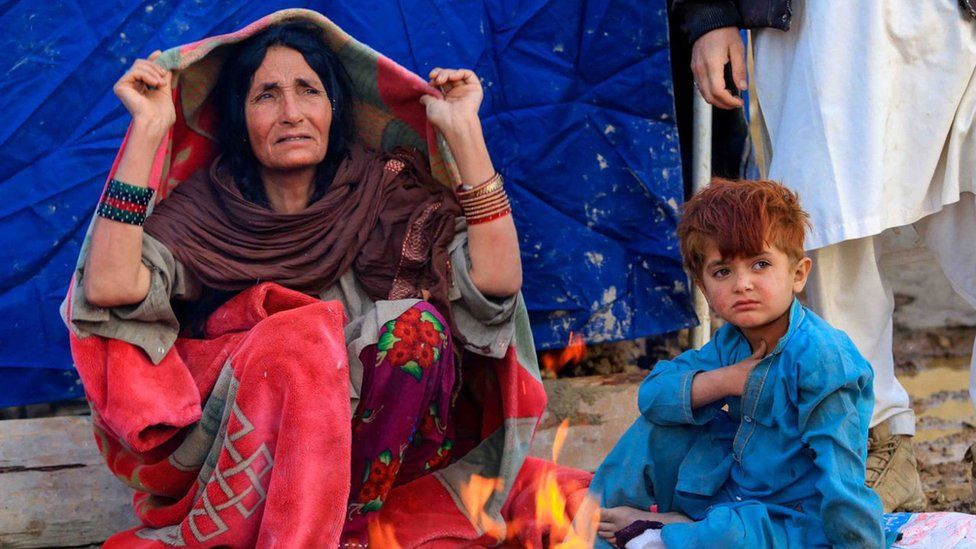According to doctors in Afghanistan who spoke to the BBC, the earthquake on Wednesday may have killed numerous children.
More than 1,000 people lost their lives in the disaster, and rescue efforts are being hampered by persistent rain, depleted supplies, and difficult terrain.
The magnitude 6.1 earthquake left unknown numbers of people buried beneath the debris of destroyed, frequently mud-built dwellings.
A woman in the Paktika province hospital revealed to reporters that she had lost 19 family members.
She spoke from her bed, stating that her family had lost seven people in one room, five in another, four in another, and three in another.
By Wednesday night, Taliban officials said search and rescue operations had finished in most places, although in remoter areas some continued still.
“We can’t reach the area – networks are too weak,” a Taliban spokesman was quoted by Reuters news agency as saying earlier.
The United Nations is among those scrambling to provide emergency shelter and food aid to remote areas in Paktika.
Survivors and rescuers have told the BBC of villages completely destroyed near the epicentre of the quake, of ruined roads and mobile phone towers – and of their fears that the death toll will rise further. Some 1,500 people were also injured, officials say.
The Taliban authorities have called for more international aid.

Most of the casualties found so far have been in the Gayan and Barmal districts of Paktika. Locals report dozens of villages collapsed.
“There was a rumbling and my bed began to shake,” a survivor called Shabir told the BBC.
“The ceiling fell down. I was trapped, but I could see the sky. My shoulder was dislocated, my head was hurt but I got out. I am sure that seven or nine people from my family, who were in the same room as me, are dead.”
A mother of six who was badly injured in the earthquake told the BBC many in her village had been killed, including seven of her own family members.
“We are very poor. We cannot reconstruct our homes again,” she said. “We have nothing to eat.”
All her family’s food supplies are buried under the rubble.
“There is nowhere to go,” she added. “I demand the Taliban rebuild our houses.”
All the villagers we meet want to show us the damage to their homes done by the earthquake.
They have lost their loved ones, alongside homes and livelihoods. Possessions are scattered amongst the debris: blankets, pots, beds stick out from the rubble.
The villagers want the world to see how their lives have been devastated, but also more tangibly, to have their names added to aid distribution schemes. A number of aid agencies have reached the scene but it’s clear more help is needed.
One man we meet has just arrived back in his village from Pakistan where he works as a labourer. Twenty members of his family were killed in the earthquake including his daughter.
Another, elderly man now finds himself responsible for his five young grandchildren – after their father died. The valleys here are overflowing with tragedy.
Many of the families are now living in makeshift tents, flanked by the rubble of the homes they had worked so hard to construct.

The deadliest earthquake to strike the country in two decades is a major challenge for the Taliban, the Islamist movement which regained power last year after the Western-backed government collapsed.
The earthquake struck early on Wednesday about 44km (27 miles) from the city of Khost and tremors were felt as far away as Pakistan and India.
Afghanistan is in the midst of a humanitarian and economic crisis, and Abdul Qahar Balkhi, a senior Taliban official, said the government was “financially unable to assist the people to the extent that is needed”.
The head of the UN, António Guterres said the agency had “fully mobilised” over the disaster.
But Mohammad Amin Huzaifa, head of information for Paktika province, told AFP it was proving “very difficult” for rescuers to reach areas “affected by floods because of heavy rains last night”.
Afghanistan is prone to quakes, as it is located in a tectonically active region, over a number of fault lines including the Chaman fault, the Hari Rud fault, the Central Badakhshan fault and the Darvaz fault.
Over the past decade more than 7,000 people have been killed in earthquakes in the country, the UN’s Office for the Co-ordination of Humanitarian Affairs reports. There are an average of 560 deaths a year from earthquakes.
Even before the Taliban takeover, Afghanistan’s emergency services were stretched to deal with natural disasters – with few aircraft and helicopters available to rescuers.
According to the UN, 93% of households in Afghanistan suffer food insecurity. Lucien Christen, from the Red Cross, said Afghanistan’s “dire economic situation” meant “they’re [Afghan families] not able to put food on the table”.

Additional reporting by Matthew Davies and Malu Cursino.

